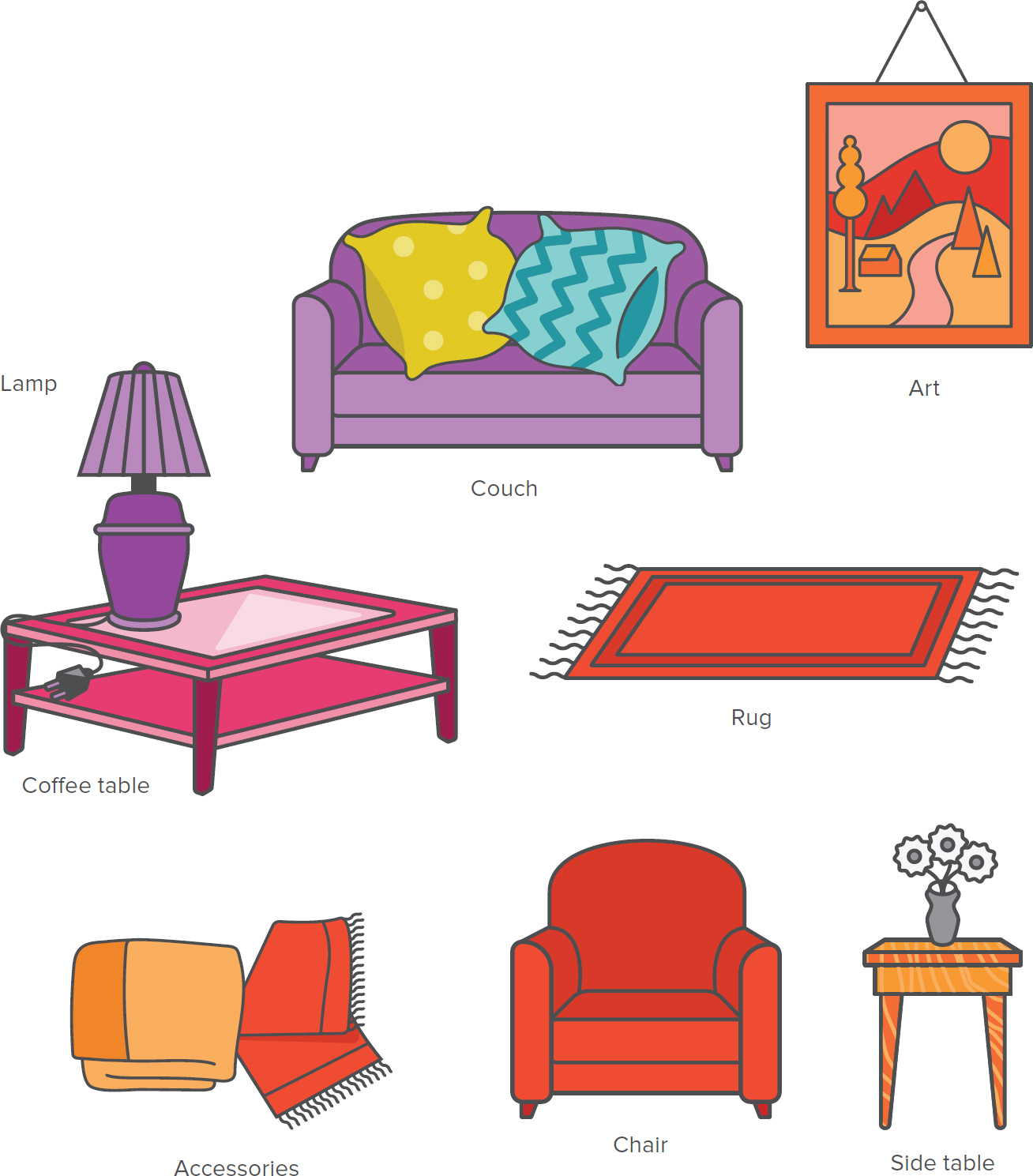4 LAYOUTS WITH THE SAME FURNITURE
Mix and match (and re-arrange!) your furniture depending on how you want to use your room. Here are a few ideas to get you started.
SMALL TALK: Okay for conversing, but most ideal for enjoying entertainment. All eyes are on the TV.
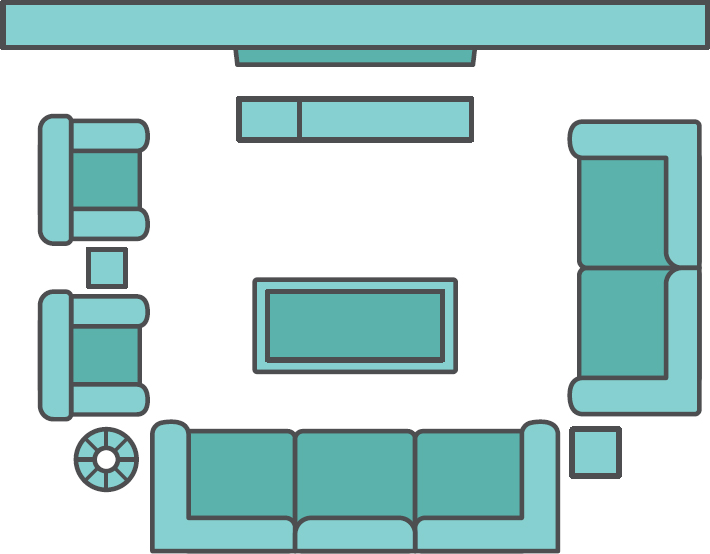
NEUTRAL: Couches face each other for direct conversation OR you can lay down to face the TV. Keep extra chairs in the corner in case of larger gatherings.
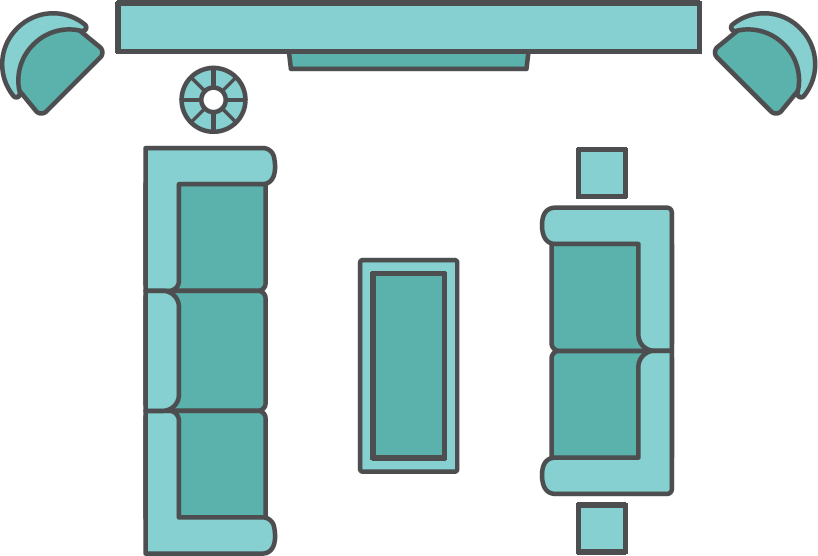
OPEN CONVERSATION: Furniture faces away from the fireplace and into the next room (likely the dining room or kitchen) to make it easy to gather and converse room-to-room.
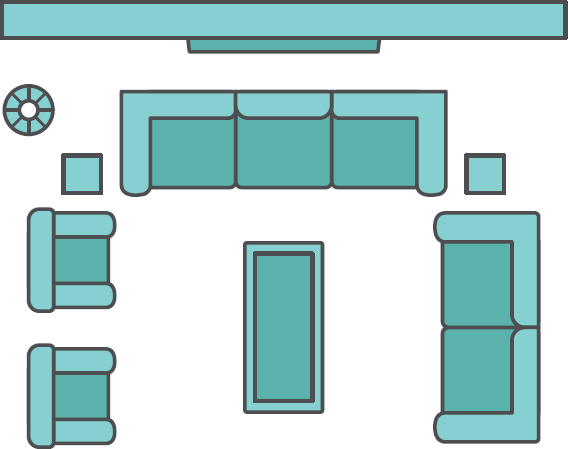
DIRECT CONVERSATION: Intended for those who want to use the space for lots of chatting. (It also works well for multiplayer game nights!)
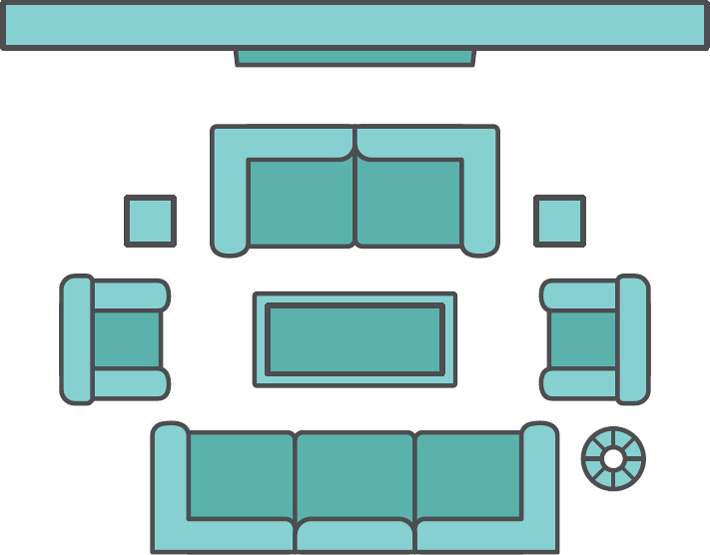
Repurposing your furniture is another inexpensive way to decorate (or redecorate) your home. Old wooden ladders can be transformed into shelves to display everything from books and magazines to blankets and towels. Also consider using found objects like old vintage suitcases or stacks of coffee-table books that can double as a side table, or try turning pallets from the flea market into a rustic coffee table. There are all kinds of ways to be creative while keeping chic.
Restyling—the final R of the Three Rs—is something I do nearly every month in my own home! I buy a ton of pillows, throw blankets, and accessories to mix and match as the seasons change. During the holidays, it’s all metallics, greens, and reds. For summer, I love bold, bright colors. If you go this route, make sure to aim for neutral-colored furniture and rugs so that your accessories can really do the talking.
Tips from the Co:
HOW DO YOU REFRESH YOUR LIVING ROOM WITHOUT BUYING ANYTHING NEW?
1. Rearrange
2. Paint the walls
3. Use accessories
I keep a box of framed art, tchotchkes, and throw pillows in my attic. When I get bored with the way things currently are, I rearrange furniture and trade out a few pieces I have for a few pieces in the backup box.
I keep my walls a neutral gray color so when I get bored with the decor I can literally do anything! I love using news clippings or magazine covers as framed art.
One of my favorite things to do is print out some small photos with an artsy filter. Then I create a border out of ribbon, washi tape, or paper and hang them on the wall above my desk or anywhere that needs a little inspiration.
Save some soda or tea bottles and paint them any color you’d like, but only on one side. (If you’re in the mood for something more glamorous, you can use glitter.) These bottles are the perfect place to put little trinkets or fresh garden flowers.
HACK: SMALL-SPACE TRICKS
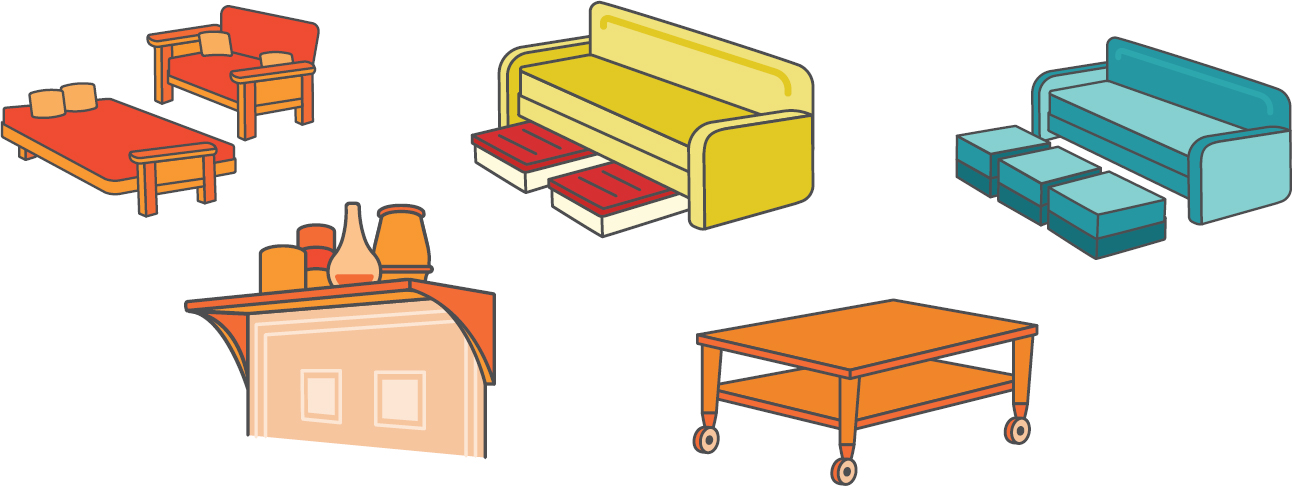
No space? No problem! I’ve had my fair share of tiny spaces to live in, from dorm rooms to studio apartments. Here are some tips and tricks for making the most out of your limited square footage.
When buying a sofa, look for one that doubles as a bed. If you live in a studio, serving as a bed will be the sofa’s primary function, as you probably won’t be entertaining too often in your small space. But in the event you have guests over, you’ll definitely thank yourself for making sure they can sit somewhere other than where you sleep.
Shelving is clutch when you’re short on space. Don’t forget about the hidden places where shelves can also make an impact, like above the door. Take advantage of as much vertical space as you can!
It goes without saying that you should always create storage underneath furniture, whether a bed or a couch. Stock up on storage bins and baskets (ideally with wheels) to make it easy to access all of your stored goods.
If you often need more space to entertain friends, try putting some of your furniture on caster wheels so that it’s easier to move things around quickly to make more room. Also consider an ottoman, which can double as a coffee table or a bench for extra seating.
Tips from the Co:
SMALL-SPACE TRICKS

Photo courtesy of Emily Henderson
EMILY HENDERSON
PROP STYLIST, HGTV DESIGN STAR WINNER, BLOGGER, AND NEW MOTHER
1. Use a tone-on-tone color palette. The more high-contrast colors you use, the busier the room can look, and therefore the smaller the room feels.
2. Use large mirrors to bounce around light as well as trick the eye into thinking the room is larger because of the reflection.
3. Get large-scale accessories, but fewer of them. You do not want lots of little things, as it will clutter the space.
4. Hanging your curtains at the ceiling rather than at window height will expand the visual size of the room and the window.
5. Use light-colored area rugs.
6. Use open shelving or glass-cased shelving instead of closed shelving to add depth and make the space look bigger.
THESE ARE THE TOP INTERIOR DESIGN MISTAKES MOST PEOPLE MAKE:
1. Having everything match, usually by ordering from a catalog and getting something right off the showroom floor
2. Scale issues—buying a huge couch or chair for a very small room
3. Hanging art at the wrong height
4. Using the wrong-size rug for the space
5. Scattering small accessories around the room rather than creating small vignettes or collections
STUFF YOU NEED
